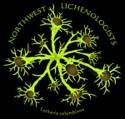daphne stone wrote:
Hi Roger,
I'd be pretty careful with your Usnea species. U subfloridana is around but not particularly common. First, check and see if the medulla is UV+. Cut several places on main branches, parallel to the length, right in to the axis, so you have half of the inside showing. Put that under short wave UV and see if it jumps out as strong blueish white. If not, you most likely don't have U subfloridana. If that is the case, look carefully at the structure (cigar-shaped connections of branches, isidia and/or soredia, soralia shape, CMA - see McCune's book)) and see where you can get in the key. good luck - Usnea is a difficult genus!
Best, Daphne
Hi Daphne,
I don't have a UV light yet, but it's on my wish list.
Besides McCune & Geiser, I am using Consortium of North American Lichen Herbaria online, as well as Sharnoff's photo site to keep things on the careful side.
I'm working through MPNW key again. My example has a few branches with constricted bases, but by-and-large the branches are uniform. The CMA images have only 2 longitudinal sections that resemble my example; U. wasmuthii & U. subfloridana.
In a couple weeks I should have materials for P test as well as a USB microscope, so I will keep working this Usnea.
On the U. subfloridana 'not particularly common' note, I notice that Bruce says in the key that U. wasmuthii is rare in Washington too. I will not be surprised to find unusual lichens at the preserve as we have over half-a-dozen vascular plants that are endangered, threatened, rare, or unusual. While folks have been working the vascular plants here for over 20 years and new finds continue, no one has listed the fungi or lichens yet so I'm keen to jump on it.
Thanks for the help Daphne -I need all I can get- and by all means please pass on any further insights. :)

